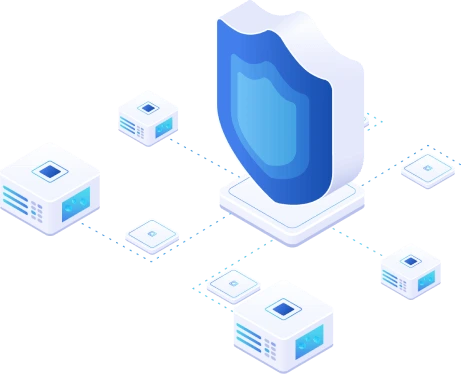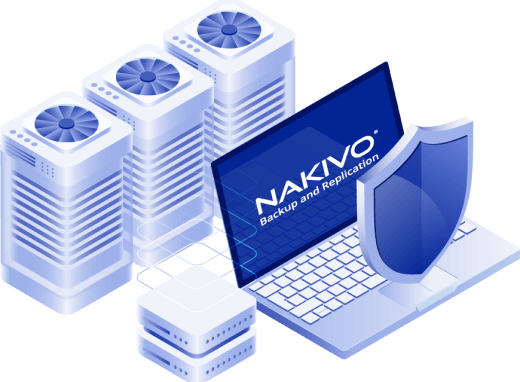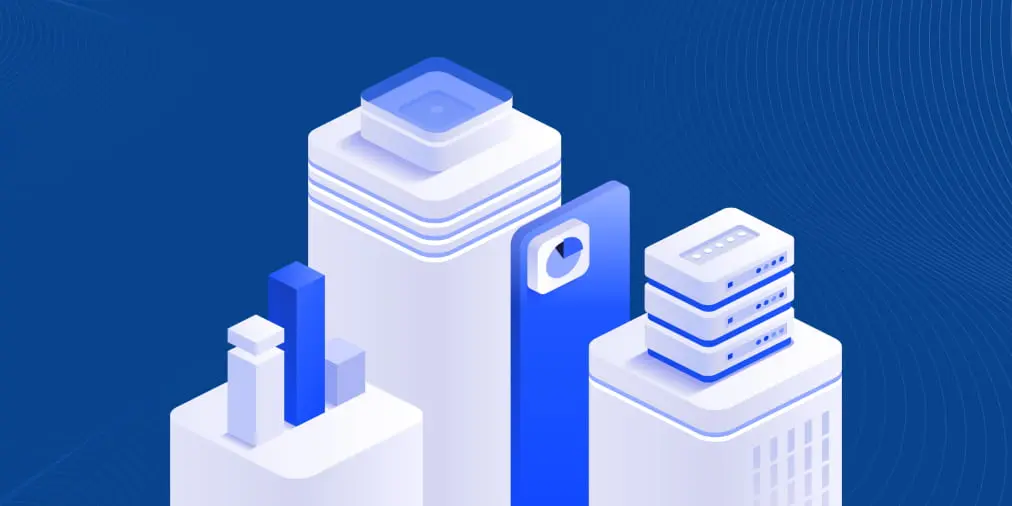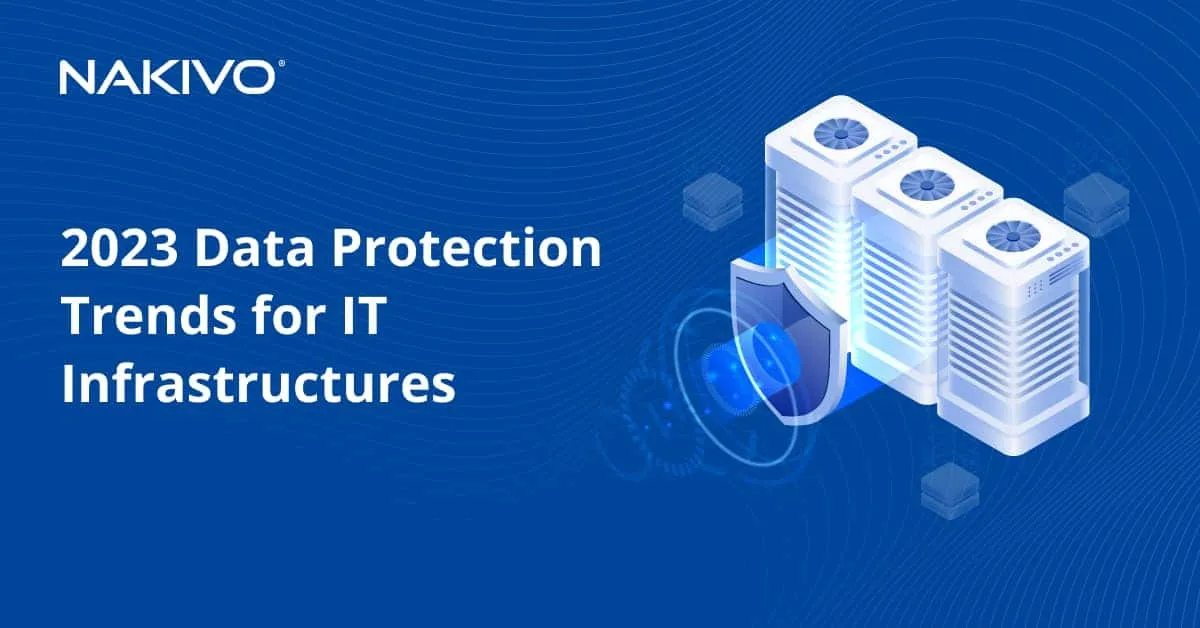Enterprise Business Continuity and Ransomware Protection
Large organizations or enterprises have a high responsibility when it comes to protecting data, especially when working directly with clients. Downtime can cause significant financial and reputational damage.
There are various factors that can cause data loss and downtime, and ransomware is one of the most dangerous threats. For these reasons, business continuity is critically important for enterprises. This blog post explains how to ensure enterprise business continuity and protect your data from ransomware attacks.
Understanding Enterprise Business Continuity
Enterprise business continuity is the ability of a large organization (enterprises) to maintain at least the most essential functions during an incident and in case of a disruption. Enterprise business continuity is a strategic approach that includes a set of measures to ensure that business processes can continue in emergency situations, such as natural disasters, cyber-attacks, hardware failures, etc. This means that an organization can quickly recover data and restore operations after such events.
A business continuity plan is needed to ensure enterprise business continuity and enterprises can face several challenges when working on this plan. Large organizations usually have multiple departments and they can spread across different locations using a complex IT infrastructure. A business continuity plan should include measures for all these departments and locations in case of failures. The strategy should include all business units for maximum integration and unified responses when disruptive events occur.
Minimizing the impact of these incidents is the main goal of enterprise business continuity, which presumes restoring operations and efficient recovery. By implementing a business continuity plan, enterprise organizations can continue operating despite disruptive events. Another approach is to develop procedures for the alternative operation modes until the normal operation mode is restored (remote work, work in another place, using a disaster recovery site and alternative infrastructure).
Business continuity risks
Understanding business continuity risks is necessary for proper enterprise business continuity management. Risk management is focused on how to mitigate external and internal problems including:
- Power outage. Servers, computers and network equipment cannot work without electricity. Power outages can cause downtime for the entire department or organization.
- Hardware failure. Hardware failure causes downtime and can lead to data loss.
- Losing data. Data loss, such as data deletion, corruption and breaches can be disastrous for enterprises.
- Cyber-attacks. These attacks can cause server unavailability and data loss. Ransomware attacks are a type of cyber-attack.
- Natural disasters. Floods, fires, tornadoes, hurricanes, earthquakes and other natural disasters can destroy not only data but also hardware, equipment, offices and datacenters.
- Non-compliance. Organizations working in specific industries and countries must meet compliance and regulation requirements to avoid penalties and sanctions that can affect business continuity.
- Remote work. Remote personal computers, virtual private networks (VPN), communication channels and other technical measures should be implemented to ensure business continuity when working remotely.
Essential Elements of Enterprise Business Continuity
Enterprise business continuity relies on several elements that allow large organizations to avoid data loss and significant interruptions:
- Business impact analysis. Access potential effects of disruptions on various business functions. Identify critical processes, dependencies, recovery time objectives (RTOs) and recovery point objectives (RPOs). RTO and RPO are the main metrics for the business continuity plan. With business impact analysis, you can define the priorities for resources and processes that are the most important to continue operations in case of an incident.
- Risk assessment. Assess risks that can impact your infrastructure and operation processes, such as natural disasters, cyber-attacks, hardware failures, etc. This allows organizations to apply measures to prevent the risks and reduce their negative impact.
- Incident response plan. Compose an incident response plan that includes which actions must be done in case of an incident and who must perform these actions. The incident response plan describes actions to protect users, data and equipment.
- Disaster recovery plan. Create a disaster recovery plan that contains actions to recover data and restore operations after a disruptive event. A disaster recovery plan includes a detailed explanation of steps to back up and recover data if issues happen. Alternative work locations and communication channels used in case of a disaster should also be explained.
- Business continuity plan. A business continuity plan is a global strategic plan that includes an incident response plan and a disaster recovery plan. A business continuity plan contains the information that an enterprise organization needs to continue operating if an unplanned event occurs. An effective plan should focus on three main areas: infrastructure, people and processes.
Integrating Ransomware Protection into Enterprise Continuity Planning
Ransomware attacks are spreading at a faster rate and are extremely dangerous for enterprise organizations. After infecting an organization, ransomware can corrupt and delete data and cause significant damage. Ransomware exploits vulnerabilities in unpatched or outdated software to infect computers and corrupt or even steal data. Ransomware attackers also use methods such as phishing or social engineering via emails to trick users and spread malware over the network.
All destructive actions of ransomware negatively impact enterprise business continuity if protective measures are not implemented. For these reasons, ransomware protection must be integrated into enterprise continuity planning as a part of the backup and recovery strategy. Comprehensive disaster recovery plans must include ransomware scenarios.
Data protection and backup strategies
Data protection strategies include preventive measures such as infrastructure monitoring, ransomware detection, patching software vulnerabilities and implementing access policies. If preventive measures do not help and ransomware corrupts or deletes data, then only a backup can be used to recover data. A robust backup strategy should include the following points:
- Regular and protected backups. The best enterprise ransomware protection measures in terms of data backup are isolated and immutable backups. Isolated backups can be air-gapped backups that are physically isolated from computers and networks. Examples of air-gapped backups are disconnected hard disk drives, optical disks and tape cartridges. Immutable backups are protected using software algorithms with the Write-Once-Read-Many (WORM) approach. Once data is written, it cannot be modified or deleted until the retention period expires.
- Retention policies. Effective retention policies allow enterprises to restore data from different recovery points, including old recovery points, and use backup storage rationally. Consider using the Grandfather-Father-Son retention policy. Incremental backups and versioning help implement retention policies.
- Multiple backups. Using multiple backups and backup copies and storing them on different storage increases the probability of recovering data if one of the backup copies is corrupted. Consider using the 3-2-1 backup strategy for enterprise ransomware prevention together with other recommended practices.
- Network segmentation and access control. If ransomware infects certain computers in an organization, network segmentation with correctly configured access control can prevent ransomware from spreading across the entire infrastructure. With network segmentation, it is possible to isolate an infected network segment to stop ransomware from infecting other segments.
- Patching vulnerabilities. It is recommended that organizations regularly assess software vulnerabilities and install security patches. This enterprise ransomware prevention measure significantly reduces the risk of ransomware infection.
- Antivirus software. Installing antivirus software helps detect and remove malicious files before they infect the system. Configure email protection and spam filters to reduce the amount of phishing attacks against your users. Emails are one of the most used vectors by cyber-criminals to launch ransomware attacks.
- Security policy. Implement a security policy that doesn’t allow users to use simple passwords that can be hacked using a brute-force or dictionary attack. Configuring multi-factor authentication increases security levels and prevents attackers from using stolen credentials to access the organization’s resources to place a ransomware infection.
- Training. Employee training is an important part of business continuity. Conducting regular training makes users aware of the main cyber-attack methods and explains the actions to perform in case of suspicious events that can indicate the start of a ransomware attack, hardware failure, etc.
Real-time monitoring and automated response
Real-time infrastructure monitoring systems with automated reports allow system administrators to react faster and fix issues, including issues related to ransomware attacks. The symptoms of ransomware activity can be detected early before ransomware causes significant damage.
Automated alerts make this process more efficient, especially for enterprises where it is difficult to manually monitor all components. As a result, administrators can detect suspicious activity such as the signs of a ransomware attack and other threats early.
Testing and improving continuity plans
Planned testing and reviews improve the business continuity plan. You can test your disaster recovery plan to ensure that every infrastructure component is ready for a potential disruption event. Testing and reviewing the test results allow organizations to detect vulnerabilities in the enterprise business continuity plan and fix them before a disaster strikes.
Include ransomware-specific scenarios in your disaster recovery testing and business continuity plans. This approach allows organizations to prepare the steps that must be performed if a ransomware attack strikes. Test RTO and RPO to verify that the needed data can be recovered in time to ensure enterprise business continuity.
After testing the plan, validate the recovery process and recovery results to ensure that backup mechanisms work as expected. This process includes verifying that isolated backups are accessible when needed and are not reachable by viruses and ransomware. Based on the test results, you can fix any gaps in the access control configuration, and improve the backup strategy if needed.
Ransomware-Resistant Backups with NAKIVO
NAKIVO Backup & Replication is a universal data protection solution that can be used by large organizations to improve enterprise business continuity by providing reliable backup and recovery capabilities. The NAKIVO solution protects virtual machines (VMware, Hyper-V, Nutanix, Proxmox VE2), Amazon EC2 instances, physical machines (Windows and Linux), file shares, Oracle databases and Microsoft 365 data. The product includes a wide set of features that help ensure ransomware protection, including:
- Immutable backups. Immutable backups on local storage, in the cloud (Amazon S3, S3-compatible, and Azure Blob storage) and in NEC HYDRAstor appliances can be used as ransomware-proof storage.
- Multiple backup locations. Store your backups on local backup servers, NAS devices, cloud platforms, tape and more.
- Backup automation. Flexible backup scheduling options allow organizations to back up data when needed to meet tight RPOs. Automatic reports can be enabled for administrators to be aware of job results.
- Flexible retention policies. Configure complex retention policies to recover data from different periods.
- Disaster recovery testing. The Site Recovery feature allows organizations to test complex disaster recovery scenarios and ensure an enterprise protection level.
- Full and granular recovery. Quickly recover only needed items or recover the full data set in case of massive data loss.
See the full list of NAKIVO features that help improve business continuity for enterprises.
Conclusion
Enterprise business continuity is critically important for large organizations in the modern world, where the number of ransomware attacks is increasing. To ensure business continuity, organizations should create a business continuity plan, including a disaster recovery plan and incident response plan. The best enterprise ransomware protection strategy presumes implementing preventive measures, especially reliable backups. Use NAKIVO Backup & Replication to implement disaster recovery strategies of any complexity and avoid data loss caused by ransomware.




